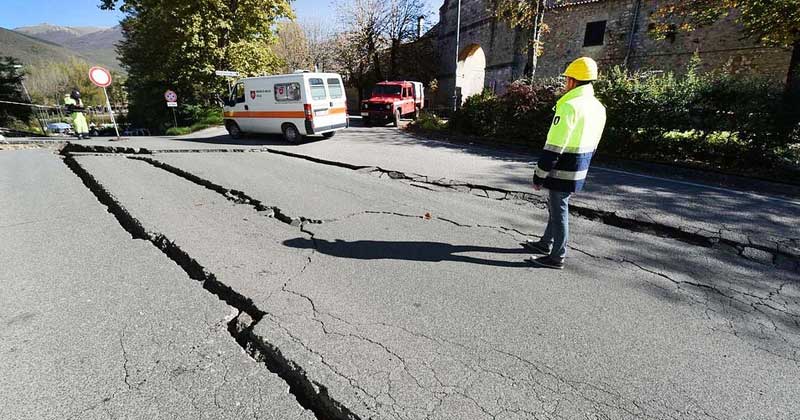Earthquakes are caused by a sudden shift along a fractured surface in the earth’s crust and the resulting release of the accumulated elastic energy. According to the current state of knowledge, an earthquake forecast is not possible, so the natural killers can’t be predicted. But how are earthquakes caused? Let’s find out.
How Are Earthquakes Caused?
Most earthquakes are caused by the movement of tectonic plates of the earth. The earth’s crust, the outermost layer of the earth, consists of several large crust plates, so-called lithospheric plates, and smaller crust fragments. If the plates move due to convection currents inside the earth, they drift away from one another or collide.
Origins of the tremors
Earthquakes are phenomena that are millions of years old. Long before modern seismologists began to record and scientifically evaluate earthquakes using the latest technology, people were already thinking about the origins of the sudden tremors.

They often had vague ideas about how are earthquakes caused like subterranean winds, electric thunderstorms in the ground, fire-breathing dragons that lived deep underground, or the wrath of the gods. From ancient times to the Middle Ages, all possible hypotheses for the origin of earthquakes were represented.
Deep cracks divide the earth’s crust into seven plates.
Today, how are earthquakes caused can be better explained. If you buy a globe, the surface is usually sound and polished while the real surface of the earth is not. The outermost layer of the earth is crisscrossed with deep cracks. They divide the earth’s crust into a total of seven large plates: the Pacific and Antarctic plates, the North and South American plates, the African, the Eurasian and the Australian plates. There are also a few smaller crust fragments.
Our continents and seas, after which the plates are named, lie on this cracked outer shell of the earth. The plates are thicker in some places and thinner in others. In some places, the earth bulges up to huge mountains like the Alps. Elsewhere, miles of deep trenches like the San Andreas fault in California run through the ground.
Why do the earth plates move?
The earth’s crust is only the outermost layer around an earth’s core and mantle, in which it is so hot that even the rock in it is in a molten state. Deep down in the earth, it sizzles enormously, just like the water and oil in the frying pan. The plates, therefore, only lie as a thin crust on a coat that is constantly in motion due to the currents in the innermost area and thus gets themselves in motion. They drift away from or towards one another, collide or rub against each other.

If the pressure is too high due to the friction of the plates or if two plates wedge into one another, a breakage occurs. The tension is discharged in the form of a movement, and that is how are earthquakes caused. Regions near the plate boundaries are particularly at risk of earthquakes. Earthquakes can also occur on the seafloor if two plates meet. Such a seaquake can trigger huge tsunamis.
Effects of earthquakes on people
Not all earthquakes are felt by humans. Earth vibrations measuring less than 2.0 on the Richter scale can only be perceived by instruments. In India, too, several hundred such light earthquakes occur every year. While these earthquakes are invisible to humans, others that have a higher value on Richter scale, wreak havoc on the surface. From around strength 5.0, earthquakes are dangerous for humans.
They devastate entire regions, killing thousands, and robbing survivors of their livelihood. The largest earthquake was 9.5 in magnitude and occurred near Valdivia, in southern Chile. It is one of the strongest earthquakes ever recorded on the Richter scale.
It is known how are earthquakes caused, but it is impossible to say exactly where an earthquake will strike and with what strength. Nevertheless, there are known regions in which earthquakes can occur again and again. The earthquake early warning systems are useful here. They are used to identify earthquakes as quickly as possible. Knowledge of the different transit times of earthquake waves is used to identify the earthquakes through the use of sensors and modern equipment.

However, in most cases, the advance warning times are very short, especially if the affected locations are very close to the epicenter. With the help of powerful seismometer networks in particularly vulnerable areas, attempts are made to design the warning period so that critical infrastructures such as power plants or electricity and gas lines can still be switched off in the event of an earthquake.
Suggested Read- How Are Cyclones Formed
Now we know how are earthquakes caused. It is useful in planning the infrastructure of the cities and even individual homes. There are several ways to design houses and buildings that are earthquake resistant. You can’t control when and how are earthquakes caused, but you can certainly take preventive measures.


